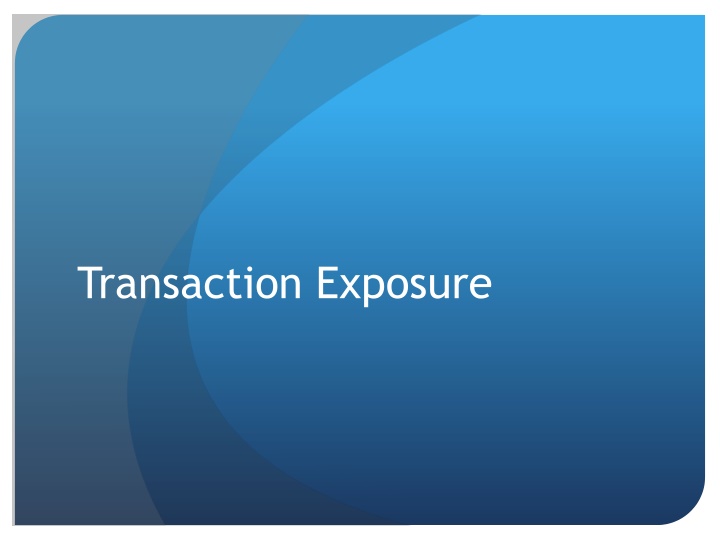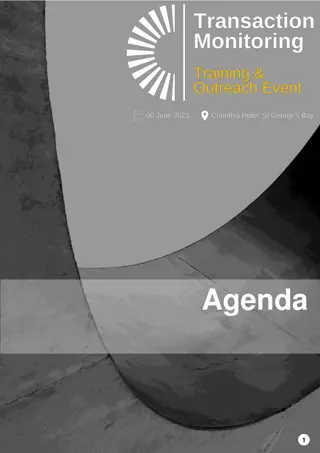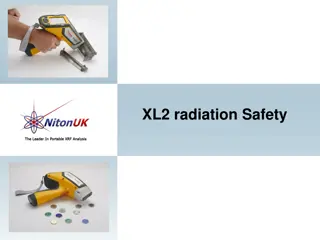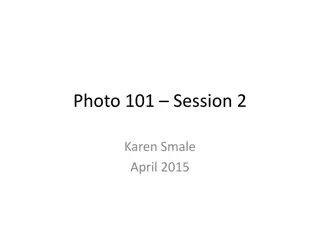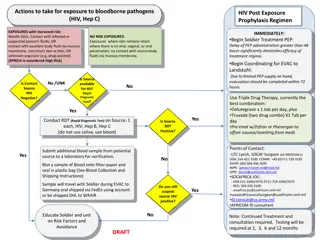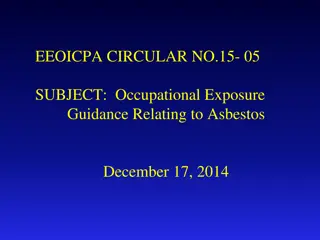Transaction Exposure
This comprehensive guide covers transaction exposure, types of FX exposure, hedging techniques using financial contracts and operational strategies. Learn how to mitigate risks associated with foreign currency fluctuations through real-life scenarios and practical solutions.
Download Presentation

Please find below an Image/Link to download the presentation.
The content on the website is provided AS IS for your information and personal use only. It may not be sold, licensed, or shared on other websites without obtaining consent from the author.If you encounter any issues during the download, it is possible that the publisher has removed the file from their server.
You are allowed to download the files provided on this website for personal or commercial use, subject to the condition that they are used lawfully. All files are the property of their respective owners.
The content on the website is provided AS IS for your information and personal use only. It may not be sold, licensed, or shared on other websites without obtaining consent from the author.
E N D
Presentation Transcript
Sections Exposures Forwards (and futures) hedge Money market hedge Options hedge Swaps hedge Operational hedge techniques
Exposure Exposure: exposed (non-zero sensitivity) to risk. Three types of FX exposure: (1) Transaction exposure: the sensitivity of realized domestic currency values of the firm s contractual cash flows denominated in foreign currencies to unexpected exchange rate changes. (2) Economic exposure: the extent to which the value of the firm would be affected by unexpected exchange rate changes. (3) Translation exposure (accounting exposure): the extend to which the firm s consolidated financial statements would be affected by changes in exchange rates.
Transaction exposure Whenever a firm has foreign-currency-denominated receivables or payables, it is subject to transaction exposure. The sizes of these receivables or payables defines the magnitude of transaction exposure. Thus, when a firm has no foreign-currency-denominated receivables or payables, it has no transaction exposure.
Hedging via financial contracts The following financial contracts can be used to hedge transaction exposure: (1) Forwards (and futures). (2) Money market securities. (3) Options. (4) Swaps.
Hedging via operational techniques The following operational techniques can also be used to hedge transaction exposure: (1) Choice of the invoice currency. (2) Lead/lag strategy. (3) Exposure netting.
Scenario Suppose that Boeing exported a Boeing jet to British Airways and billed 10 million payable in 1 year. Non-$ receivable for Boeing transaction exposure. This is so because the $ value of 10 million receivable in 1 year is subject to the $/ FX risk in this coming year.
Forward market hedge Strategy: the firm may sell (buy) its foreign currency receivables (payables) forward. That is, Boeing sells forward its 10 million receivables for delivery in 1 year at current forward rate, say $1.46/ . In 1 year, Boeing will deliver the received 10 million to the forward bank in exchange for $14.6 million (10 1.46). Now the $14.6 million cash inflow in 1 year involves no FX risk. Suppose that the spot rate in 1 year turns out to be $1.4/ . Boeing thus would receive $14 million had it not entered into the forward contract. The ex post gain for forward hedging is $0.6 million.
Futures market hedge Boeing can also choose to sell/short futures to hedge the FX risk. But the hedge is likely to be approximate because futures are standardized and cannot tailor to Boeing s hedging need, say matching the exact size of the exposure, maturity date, etc. For this case, Boeing needs 160 CME contracts (standardized size 62,500) for 10 million exposure. Futures market FX hedging is less popular than forward market FX hedging.
Money market hedging Suppose that the U.S. interest rate is 6.1%. The U.K. interest rate is 9%. The spot $/ = 1.50. Boeing can hedge its FX risk through the following money market hedging procedure: (1) Borrow 9.174 million (i.e., creating payables) for 1 year @ 9% so that the liability will be 10 million (9.174 = 10/1.09) in 1 year. This 10 million liability in 1 year will be paid off when the British Airways 10 million receivable is collected. (2) Convert 9.174 million into $13.761 million (= 9.174 1.50) today and invest @ 6.1%. This $ position will grow to $14.601 million in 1 year.
Forward vs. money market Recall that forward hedge gave Boeing $14.6 million cash inflow in 1 year, where as money market hedge gave Boeing $14.601 million in 1 year. Note that these two numbers are almost identical, and this is quite typical because interest rate parity (the no- arbitrage relationship between forward market and money market) usually holds. In this case, money market hedge is just slightly preferable to forward hedge. IRP: In American terms, (F S) / S iD iF
Options market hedge Both forward market hedge and money market hedge are able to completely eliminate FX risk exposure, both on the upside and downside. Sometimes, a firm may want to protect itself from FX risk only if adverse outcomes occur. Strategy: a firm may buy a foreign currency put (call) option, quoted in the American terms, to hedge its foreign currency receivables (payables). Note that the hedge strategy, regardless of receivables or payables, is to buy and not to sell (underwrite/short).
Hedge against adverse outcomes Boeing acquired a long position in a particular 1-year put option on 10 million that has an exercise price of $1.46/ and a premium (price) of $0.02/ . The option cost is $0.2 million today. The option cost is $0.2122 million (= 0.2 1.061) in 1 year. This provides a hedge against possible adverse outcomes; i.e., the possibility that the spot rate in 1 year is lower than 1.46. Suppose that the spot rate in 1 year turns out to be $1.3/ so the $1.46/ exercise price is a good price exercise: convert 10 million into $14.6 million in 1 year subtracting the option cost in 1 year, $0.2122 million, Boeing has the net dollar proceeds: $14.3878 million (= 14.6 0.2122).
Preserving upside potential 1-year put option on 10 million that has an exercise price of $1.46/ and a premium (price) of $0.02/ . The option cost is $0.2122 million (= 0.2 1.061) in 1 year. Suppose that the spot rate in 1 year turns out to be $1.6/ does not exercise convert 10 million into $16 million at the spot rate in 1 year subtracting the option cost in 1 year, $0.2122 million, Boeing has the net dollar proceeds: $15.7878 million (= 16 0.2122).
Break-even The break-even spot (expected) in 1 year, ST*, by which Boeing will be indifferent between forward hedging and option hedging is $1.48/ . The solution is obtained by solving the following equation: ($10 million ST) - $0.2122 million = $14.6 million. If expected future spot rate is greater (less) than the break-even rate, the options (forward) hedge may be preferred.
Hedging recurrent exposure with swaps Swap contracts can be viewed as a series of forward contracts. Firms that have recurrent exposure can usually hedge their exchange risk at a lower cost with swaps than with a program of hedging each exposure as it comes along. Suppose that Boeing is scheduled to deliver a jet to British Airways at the beginning of the year for the next 5 years. Boeing can enter a swap by which Boeing delivers 10 million to the swap bank each year for 5 years and take delivery of a predetermined dollar amount each year.
Operational hedging via invoice currency The firm can shift, share, or diversify: Shift exchange rate risk by invoicing foreign sales in home currency Share exchange rate risk by pro-rating the currency of the invoice between foreign and home currencies Diversify exchange rate risk by using a market basket index
Hedging via lead and lag Lead: pay or collect early; lag: pay or collect late. If a currency is appreciating, pay those bills denominated in that currency early; let customers in that country pay late as long as they are paying in that currency. If a currency is depreciating, give incentives to customers who owe you in that currency to pay early; pay your obligations denominated in that currency as late as your contracts will allow.
Exposure netting When a firm has both receivables and payables in a given foreign currency, it should consider hedging only its net exposure. Suppose that Boeing has receivables of 10 million from British Airways, and it has payables of 5 million to Rolls-Royce. Both due around the same time. Then the net exposure is 5 million receivables.
Should the firm hedge? Not everyone agrees that a firm should hedge. Hedging by the firm may not add to shareholder wealth if the shareholders can manage exposure themselves. Hedging may not reduce the non-diversifiable risk of the firm. Therefore, shareholders who hold a diversified portfolio are not benefitted when management hedges. In the presence of market imperfections, the firm may hedge; e.g., (1) information asymmetry: The managers may have better information than the shareholders, (2) differential transactions costs: the firm may be able to hedge at better prices than the shareholders.
End-of-chapter Questions: 1-7. Problems: 1-3, 6, 7 (only a and b).
